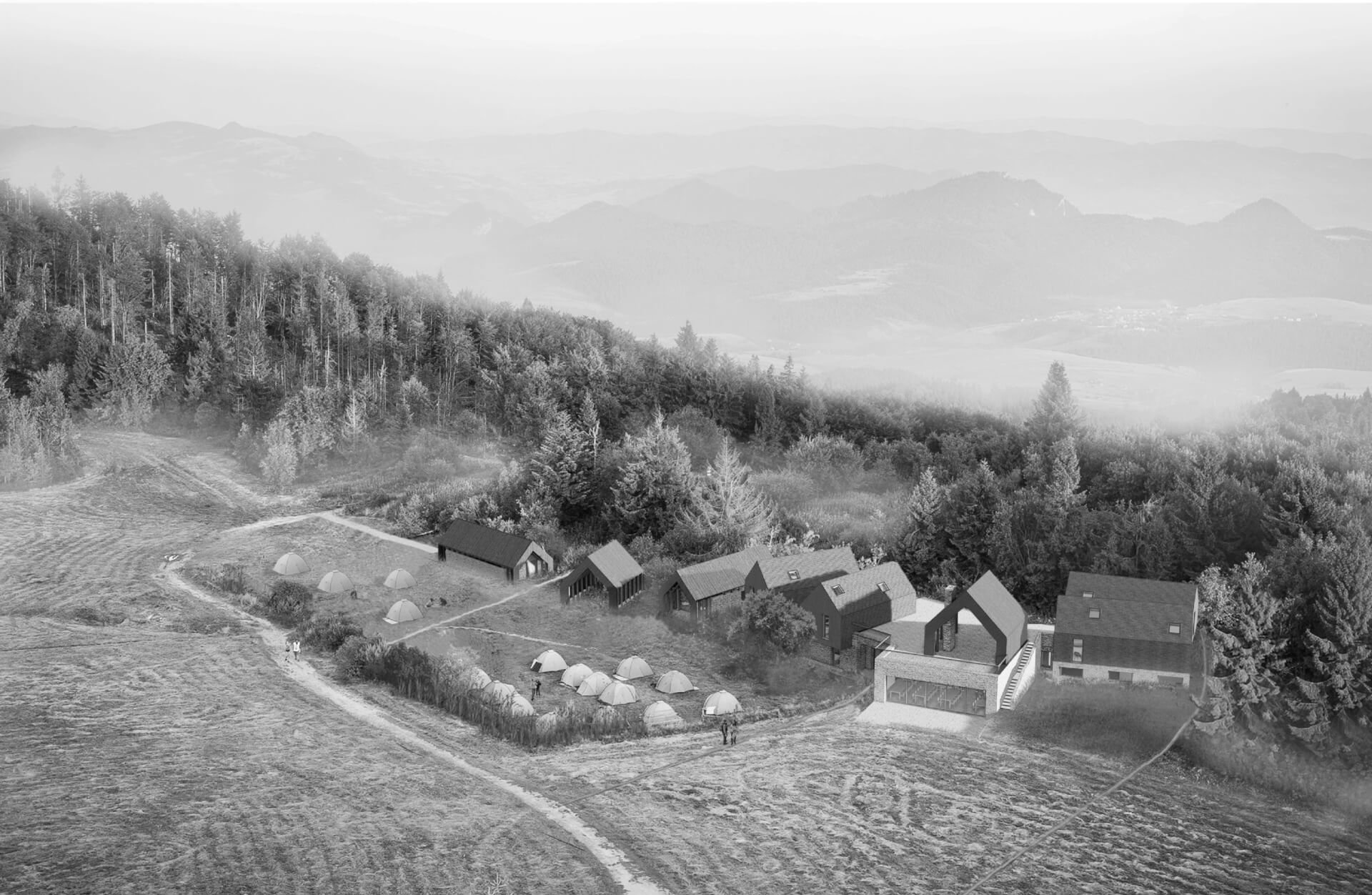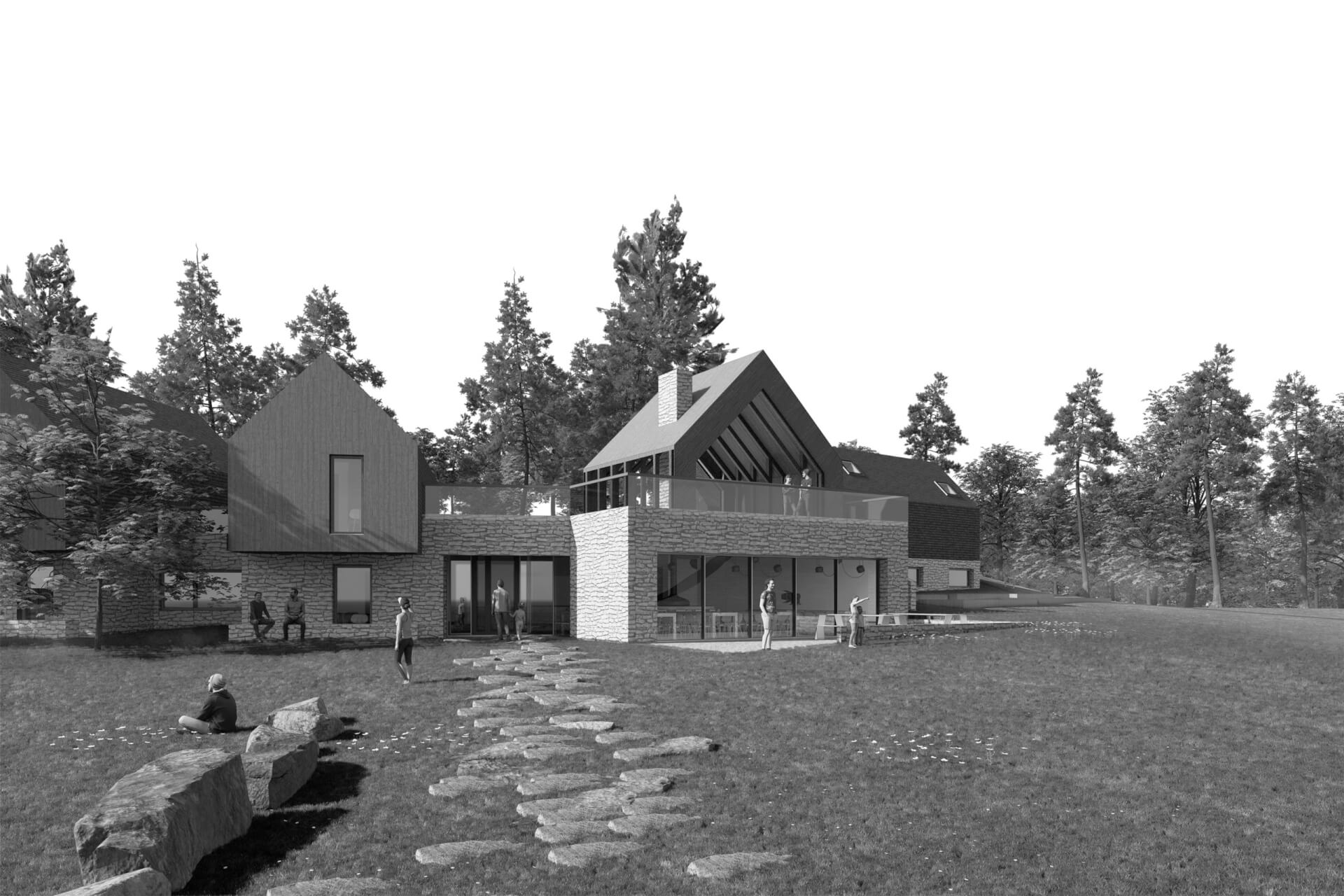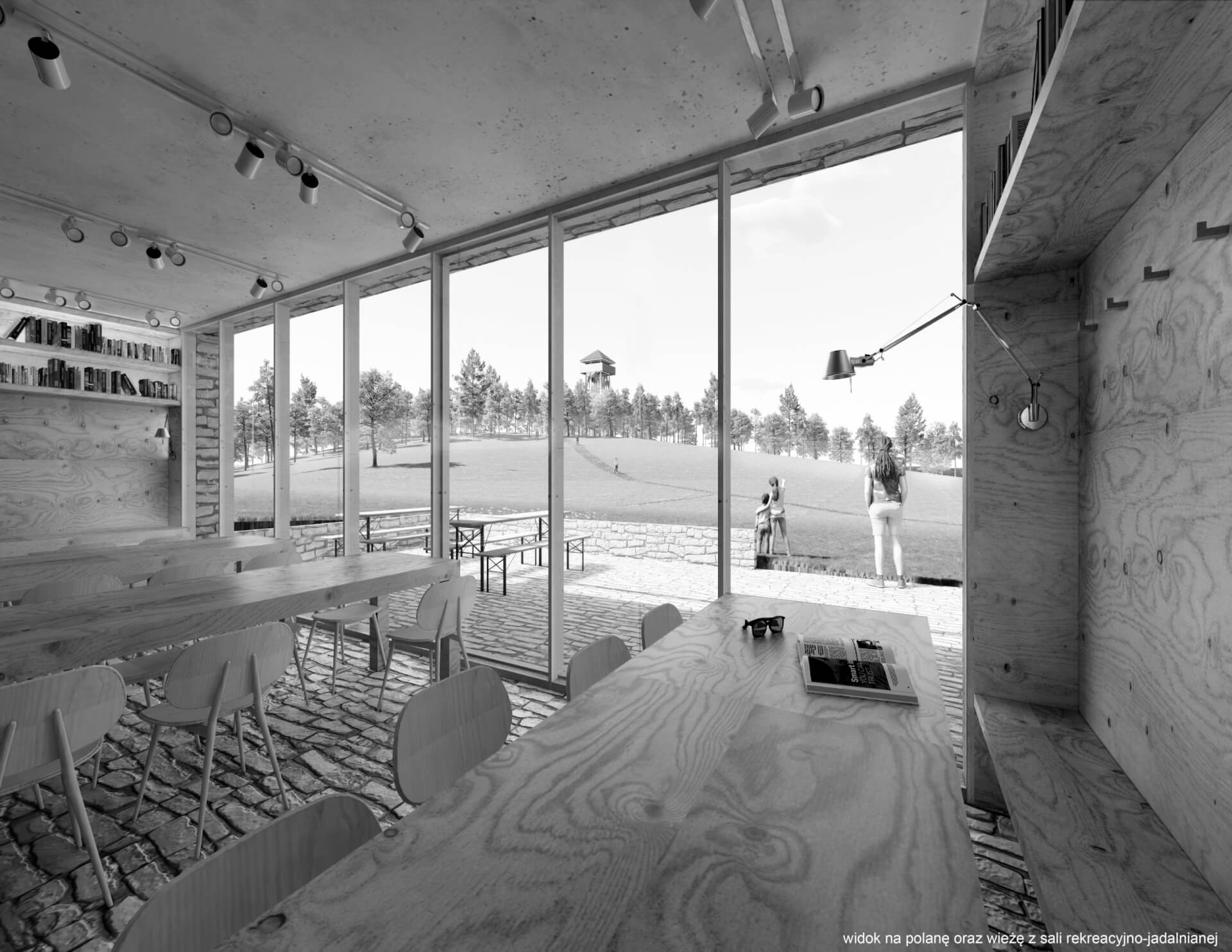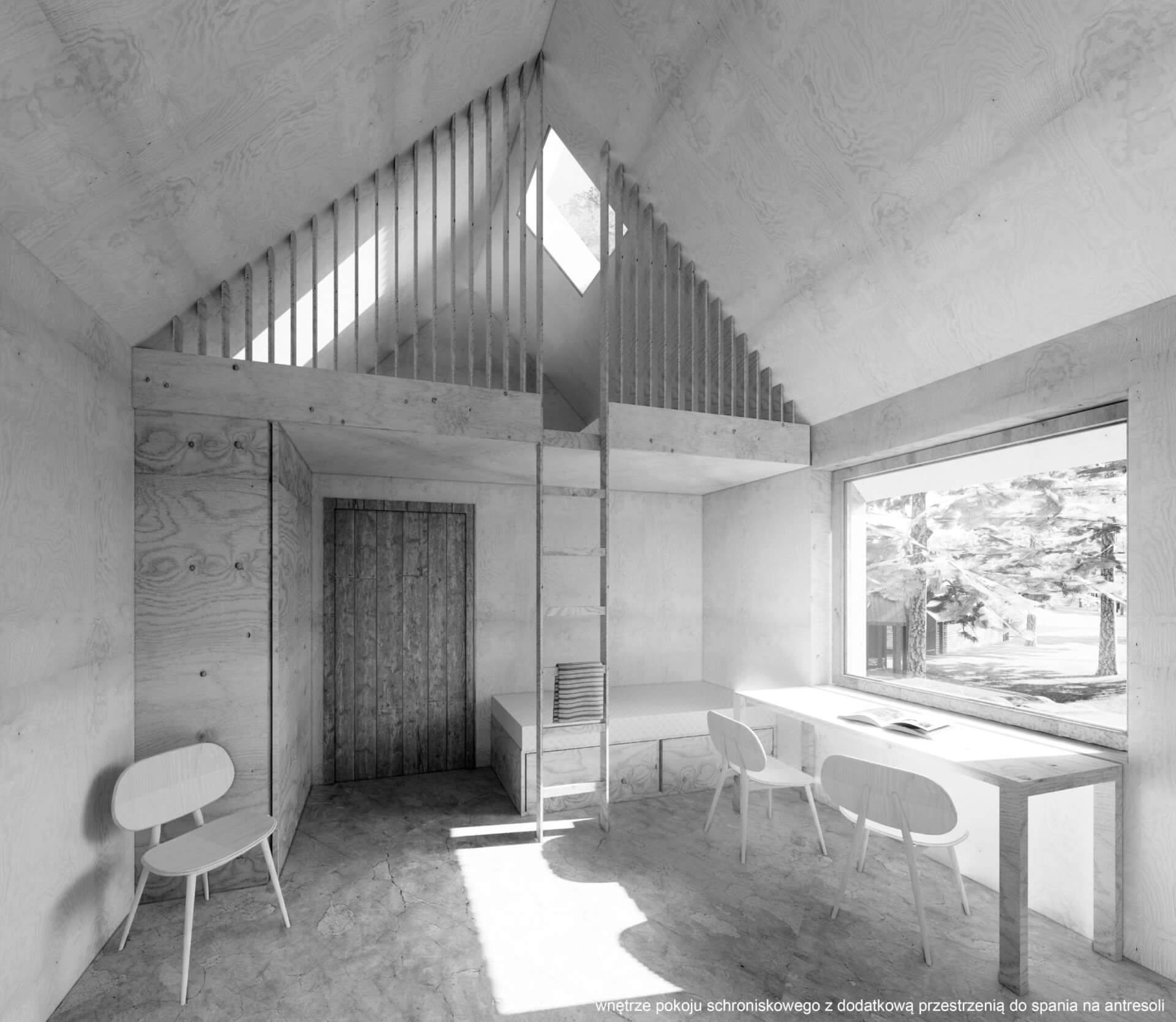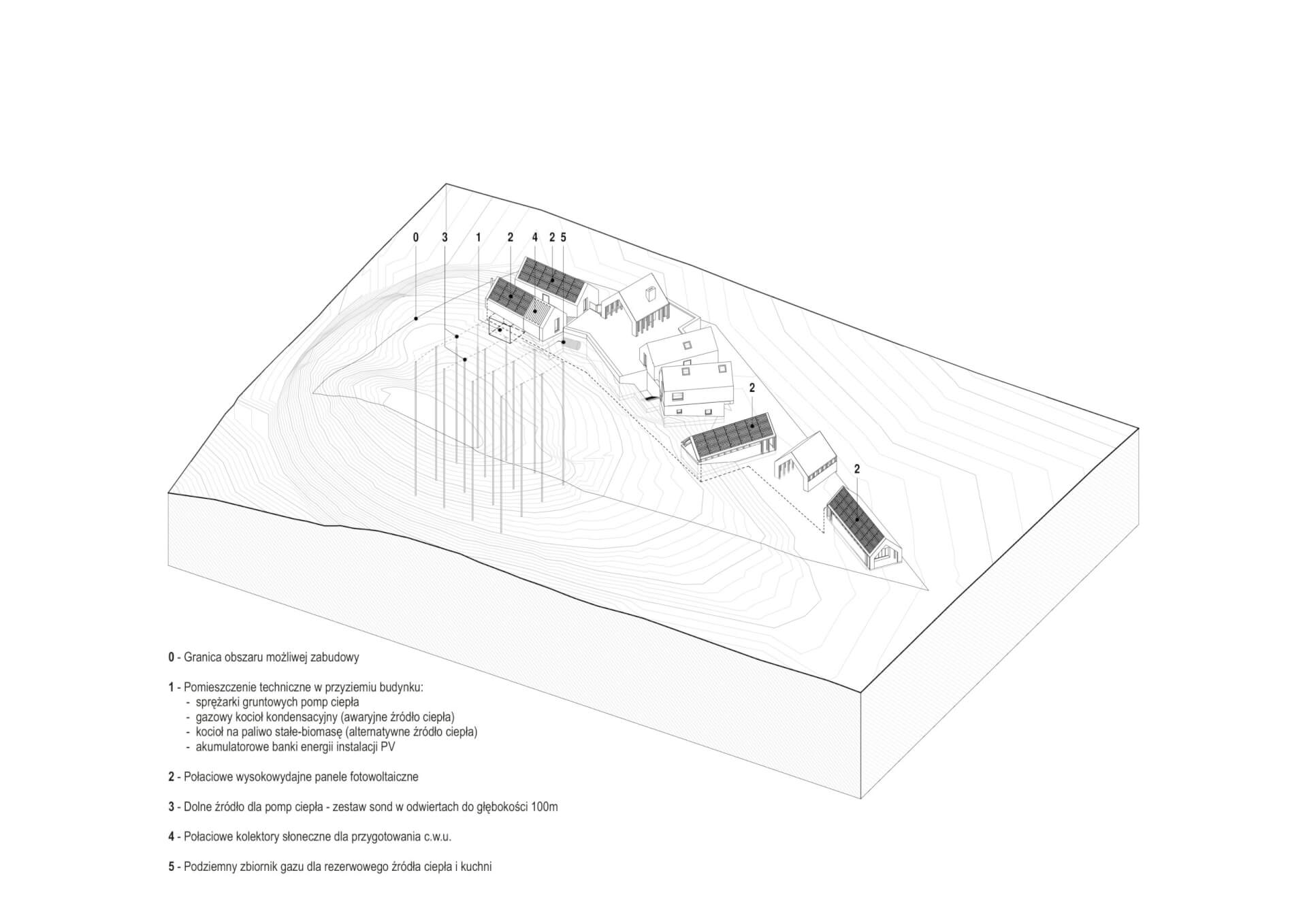lubań shelter
Gorce, cloudy and earthy, green and straying,
Spruces, shacks of blackened timber,
Sagebrush, meager spuds and slender stalks,
Sparkling creeks and nibbling sheep.
Leopold Staff, “Gorce”
Verdant byways, blackened timber and Maguran sandstone comprise the color palette of local, affective, material associations. Genius loci is at once austere, as a wind-blown rock would be and at other times, soft and caressing like fine mist on a summer morning. In these magical surroundings, every architectural detail must be powerful enough to hold up to the harsh natural environment, yet subtle enough to blend into the breathtaking, almost untouched habitat. It’s no easy task. The Lubań Settlement project endeavors to attain this seemingly antithetical aim. Rendered onto a gentle slope, simple archetypal forms search for harmony with their surroundings, while the materials used aspire to withstand the harsh natural environment.
A crushed rock is set in a landscape of a clearing under Mount Lubiana. It sits like a nugget broken into its various elements. The Gorce Mountains are magnificent but modest in size, which is why the lodge to be constructed here cannot predominate. Mountain lovers want peace, rest, and undisturbed natural surroundings, not architectural wonders. Set as though in the background, The Luban Settlement is an attempt at a modest solution. In Kahnesque terms (Louis Isadore Kahn, ex. Exeter Library) the lodge is a space which “tends to” the ones being “tended to”, namely the mountains. Never the other way around. It is worth mentioning that the key to the layout of the space, aside from matching the slope, was the desire to preserve all the trees. The structure stays clear of and bends away from every living tree trunk and major branch.
In addition, the concept seeks inspiration in local traditions. The Czorsztyn Settlement located in Kluszkowce, for reasons of its own history (structures moved as a result of Czorsztynski Lake which came into being in the 1990’s), is the very essence of local building traditions. An open-air-museum which opened in 1997 and functions as a hotel, features luxury mansions, small manors, bed and breakfasts, and typical 19th and 20th Century properties. These structures have various influences (i.e. the Zakopane-style “Zbyszek” villa). They are also status symbols of their original owners. Among those free of then “glitz” – built as utility constructions and not for display – one can find modest cellars made of stone and wood which now line one of the alleyways of the open-air-museum. It is these simple designs that inspire the Luban Settlement. The idea of the mountain lodge follows these simple, early configurations.
The functional layout of the space, or set of structures to be precise, was subdivided into several areas. The main thrust of the building, melding into the slope, is a sturdy, well-founded structure. All essential functions are hidden within this stone foundation. They include technical areas, work rooms, restrooms in the western section, rec-hall/cafeteria and bar (the heart of the lodge), back room, reception, and a panoramic window with views of a radiant glade and an observation tower. The east wing houses a set of six-person bedrooms along with their necessary infrastructure. On the floor above, there is a spacious terrace with a camping shed. There are also four wooden cabins located on the hillside that house additional sleeping space. This layout allows for flexible management of energy and other resources during the winter and off-season period when the facilities are not in use. During the summer only, there will be a tent base with a brand-new open shed in another pavilion, and a set of toilets, showers (available also to passers-by) with a sink. The old shed will be dismantled, with the new structures being incorporated into the hillside, so as not to obstruct views across the glade.
 all
all 